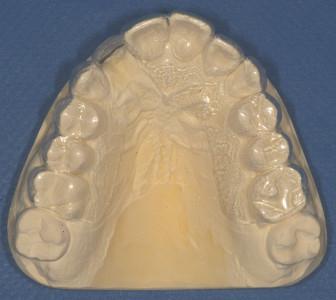-
0
Patient Assessment
- 0.1 Patient Demand
- 0.2 Anatomical location
-
0.3
Patient History
- 2.1 General patient history
- 2.2 Local history
-
0.4
Risk Assessment
- 3.1 Risk Assessment Overview
- 3.2 Age
- 3.3 Patient Compliance
- 3.4 Smoking
- 3.5 Drug Abuse
- 3.6 Recreational Drug and Alcohol Abuse
- 3.7 Condition of Natural Teeth
- 3.8 Parafunctions
- 3.9 Diabetes
- 3.10 Anticoagulants
- 3.11 Osteoporosis
- 3.12 Bisphosphonates
- 3.13 MRONJ
- 3.14 Steroids
- 3.15 Radiotherapy
- 3.16 Risk factors
-
1
Diagnostics
-
2
Treatment Options
-
2.1
Treatment planning
- 0.1 Non-implant based treatment options
- 0.2 Treatment planning conventional, model based, non-guided, semi-guided
- 0.3 Digital treatment planning
- 0.4 NobelClinician and digital workflow
- 0.5 Implant position considerations overview
- 0.6 Soft tissue condition and morphology
- 0.7 Site development, soft tissue management
- 0.8 Hard tissue and bone quality
- 0.9 Site development, hard tissue management
- 0.10 Time to function
- 0.11 Submerged vs non-submerged
- 0.12 Healed or fresh extraction socket
- 0.13 Screw-retained vs. cement-retained
- 0.14 Angulated Screw Channel system (ASC)
- 2.2 Treatment options esthetic zone
- 2.3 Treatment options posterior zone
- 2.4 Comprehensive treatment concepts
-
2.1
Treatment planning
-
3
Treatment Procedures
-
3.1
Treatment procedures general considerations
- 0.1 Anesthesia
- 0.2 peri-operative care
- 0.3 Flap- or flapless
- 0.4 Non-guided protocol
- 0.5 Semi-guided protocol
- 0.6 Guided protocol overview
- 0.7 Guided protocol NobelGuide
- 0.8 Parallel implant placement considerations
- 0.9 Tapered implant placement considerations
- 0.10 3D implant position
- 0.11 Implant insertion torque
- 0.12 Intra-operative complications
- 0.13 Impression procedures, digital impressions, intraoral scanning
- 3.2 Treatment procedures esthetic zone surgical
- 3.3 Treatment procedures esthetic zone prosthetic
- 3.4 Treatment procedures posterior zone surgical
- 3.5 Treatment procedures posterior zone prosthetic
-
3.1
Treatment procedures general considerations
-
4
Aftercare
Treatment planning conventional, model based, non-guided, semi-guided
Key points
- Based on the diagnostic provisional set-up, a surgical guide template can be fabricated in order to facilitate proper positioning of implants in bone.
- Surgical guide templates can be conventional model based or cone beam computer tomography based.
A surgical guide template is used during surgery as an aid for proper positioning of the implant in the bone. There are three design concepts based on the amount of surgical restriction offered by the surgical guide templates:
- non-limiting design;
- partially guided design: the first drill used for the osteotomy is directed using the surgical guide template;
- completely guided design.
In general, the non-limiting and semi-guided designs are conventional model based, whereas the completely guided design is based on cone beam computer tomography and planning software.
The non-limiting design is based on a cast and wax-up and mostly a vacuum-formed template has been made with an open space at the occlusal part of the future restoration. This design provides only an indication, without angulation, to the surgeon as to where the proposed prosthesis is in relation to the selected implant site (Figures 1 & 2).
The partially guided design is also based on a cast and wax-up and an acrylic resin matrix is made over the occlusal part of the remaining dentition, including the future position of the implant-supported restoration. A hole is driven into the acrylic resin in line with the desired position and angulation of the implant in relation with the future restoration. Acrylic resin is removed at the labial or palatal/lingual side, leaving an half-open tube for position and angulation of the first drill. The first drill used for the osteotomy is directed using the surgical guide template, and the remainder of the osteotomy and implant placement is then finished freehand by the surgeon, still giving some flexibility.
Figure 1: Non-limiting surgical guide template situated on cast Figure 2: Non-limiting surgical guide template




